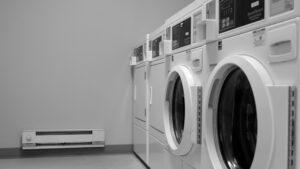Electric element efficiency refers to the ability of an electric element to convert electrical energy into heat or other desired forms of energy with minimal waste. It is a measure of how effectively an electric element performs its intended function. The efficiency of an electric element is important because it directly affects energy consumption and costs. By understanding the basics of electric element efficiency, individuals can make informed decisions about their energy usage and take steps to improve efficiency.
Types of Electric Elements and Their Efficiency
There are various types of electric elements commonly used in homes and businesses, each with its own level of efficiency. Some common types include resistive heating elements, induction heating elements, and radiant heating elements.
Resistive heating elements, such as those found in electric stoves and water heaters, work by passing an electric current through a resistive material, which generates heat. These elements are relatively simple and have high efficiency levels, typically around 95%. However, they can be less efficient when used for long periods or at high temperatures.
Induction heating elements use electromagnetic fields to generate heat. They are commonly found in induction cooktops and industrial heating applications. Induction heating elements have high efficiency levels, often exceeding 90%. They are also more responsive and precise than resistive heating elements.
Radiant heating elements, such as infrared heaters, emit heat through electromagnetic radiation. They are often used for outdoor heating or in specific areas where targeted heat is required. Radiant heating elements can have varying levels of efficiency depending on the design and materials used.
Common Causes of Inefficient Electric Elements
Several factors can contribute to the inefficiency of electric elements. One common cause is poor insulation or inadequate sealing around the element, which can result in heat loss. Another factor is improper installation or placement of the element, leading to inefficient heat distribution.
Inefficient electric elements can also be caused by a buildup of dirt, dust, or other debris on the element’s surface. This can hinder heat transfer and reduce efficiency. Additionally, aging or worn-out elements may become less efficient over time.
Examples of common issues with electric elements include uneven heating, longer heating times, and higher energy consumption than expected. These issues can be indicators of inefficiency and should be addressed to improve performance.
How to Troubleshoot Inefficient Electric Elements
To troubleshoot inefficient electric elements, it is important to follow a step-by-step process. First, check for any visible signs of damage or wear on the element itself. Look for loose connections, frayed wires, or signs of overheating.
Next, inspect the surrounding area for any potential issues that may be affecting the element’s efficiency. Check for proper insulation and sealing to prevent heat loss. Clean any dirt or debris that may have accumulated on the element’s surface.
If the element is still not performing efficiently, it may be necessary to consult a professional electrician or technician. They can use specialized tools and equipment to diagnose and fix any underlying issues with the element.
Importance of Regular Maintenance for Electric Elements
Regular maintenance is crucial for ensuring the optimal performance and efficiency of electric elements. By implementing a maintenance schedule, individuals can prevent potential issues and extend the lifespan of their elements.
Benefits of regular maintenance include improved energy efficiency, reduced energy costs, and enhanced safety. Regular cleaning and inspection can remove any dirt or debris that may hinder heat transfer and reduce efficiency. It also allows for early detection of any potential problems before they escalate into major issues.
Recommended maintenance schedule for electric elements may vary depending on the type and usage. However, a general guideline is to clean and inspect the elements at least once a year. It is also important to follow manufacturer’s recommendations for specific maintenance procedures.
Tips for Optimizing Electric Element Efficiency
There are several simple changes and best practices that individuals can implement to improve the efficiency of their electric elements. These include:
1. Properly insulating the surrounding area to prevent heat loss.
2. Using timers or programmable thermostats to control the operation of electric elements.
3. Avoiding overloading circuits by distributing the load evenly among multiple elements.
4. Regularly cleaning and maintaining the elements to remove any dirt or debris.
5. Using reflective surfaces or heat reflectors to maximize heat output.
By implementing these tips, individuals can optimize the efficiency of their electric elements and reduce energy consumption.
Upgrading to More Efficient Electric Elements
Upgrading to more efficient electric elements can provide several benefits, including improved performance, energy savings, and reduced environmental impact. When considering an upgrade, it is important to consider factors such as energy efficiency ratings, cost-effectiveness, and compatibility with existing systems.
Energy efficiency ratings, such as the Energy Star certification, can help individuals identify the most efficient options available. These ratings indicate that the product meets certain energy efficiency standards set by regulatory bodies.
Cost-effectiveness is another important factor to consider when upgrading electric elements. While more efficient elements may have a higher upfront cost, they can result in long-term energy savings that outweigh the initial investment.
Compatibility with existing systems is also crucial when upgrading electric elements. It is important to ensure that the new elements are compatible with the electrical system and any other components they will be connected to.
Energy-Saving Practices to Improve Electric Element Efficiency
In addition to upgrading electric elements, there are several energy-saving practices that individuals can implement to improve overall efficiency. These practices include:
1. Using natural lighting whenever possible to reduce reliance on electric lighting.
2. Turning off lights and appliances when not in use.
3. Using energy-efficient light bulbs and appliances.
4. Insulating walls, windows, and doors to prevent heat loss.
5. Setting thermostats to optimal temperatures and using programmable thermostats to regulate heating and cooling.
By implementing these energy-saving practices, individuals can reduce their overall energy consumption and improve the efficiency of their electric elements.
The Role of Insulation in Electric Element Efficiency
Insulation plays a crucial role in the efficiency of electric elements. Proper insulation helps prevent heat loss and ensures that the generated heat is directed towards the desired area.
There are various types of insulation available, including fiberglass, foam, and reflective insulation. Each type has its own effectiveness in terms of heat retention and prevention of heat transfer.
Fiberglass insulation is one of the most common types and is known for its thermal resistance properties. It is relatively affordable and easy to install, making it a popular choice for insulating walls, ceilings, and floors.
Foam insulation, on the other hand, provides a higher level of insulation due to its ability to fill gaps and cracks. It is often used in areas where airtight sealing is required, such as around windows and doors.
Reflective insulation works by reflecting radiant heat away from the desired area. It is commonly used in attics and crawl spaces to prevent heat transfer from the roof or ground.
By properly insulating the surrounding area of electric elements, individuals can minimize heat loss and improve overall efficiency.
Environmental Benefits of Efficient Electric Elements
Efficient electric elements not only provide cost savings but also have a positive impact on the environment. By reducing energy consumption, individuals can help reduce greenhouse gas emissions and their carbon footprint.
Efficient electric elements consume less electricity, which means less demand on power plants that rely on fossil fuels. This leads to a reduction in carbon dioxide emissions, a major contributor to climate change.
Additionally, efficient electric elements can help conserve natural resources by reducing overall energy consumption. This can help preserve valuable resources such as coal, oil, and natural gas.
By choosing efficient electric elements and implementing energy-saving practices, individuals can contribute to a more sustainable future and help protect the environment.
What Are Some Beginner Tips for Troubleshooting and Optimizing Electric Element Efficiency?
When it comes to optimizing electric element efficiency, there are a few beginner tips to keep in mind. First, make sure to clean the electric element regularly to remove any buildup. Additionally, consider insulating the element to prevent heat loss. Lastly, adjust the temperature settings for optimal efficiency. Following these electric element efficiency tips can help save energy and improve performance.
Achieving Optimal Electric Element Efficiency for Your Home or Business
In conclusion, understanding the basics of electric element efficiency is crucial for individuals looking to optimize their energy usage and reduce costs. By familiarizing themselves with the different types of electric elements and their efficiency levels, individuals can make informed decisions when choosing or upgrading their elements.
Regular maintenance and troubleshooting are important for identifying and fixing any issues that may be affecting the efficiency of electric elements. By implementing energy-saving practices and properly insulating the surrounding area, individuals can further improve efficiency and reduce energy consumption.
Upgrading to more efficient electric elements can provide significant benefits in terms of performance, energy savings, and environmental impact. By considering factors such as energy efficiency ratings, cost-effectiveness, and compatibility, individuals can make the best choice for their specific needs.
By achieving optimal electric element efficiency, individuals can not only save money but also contribute to a more sustainable future.



